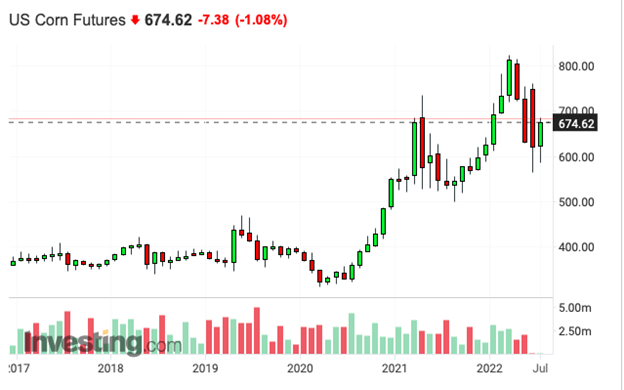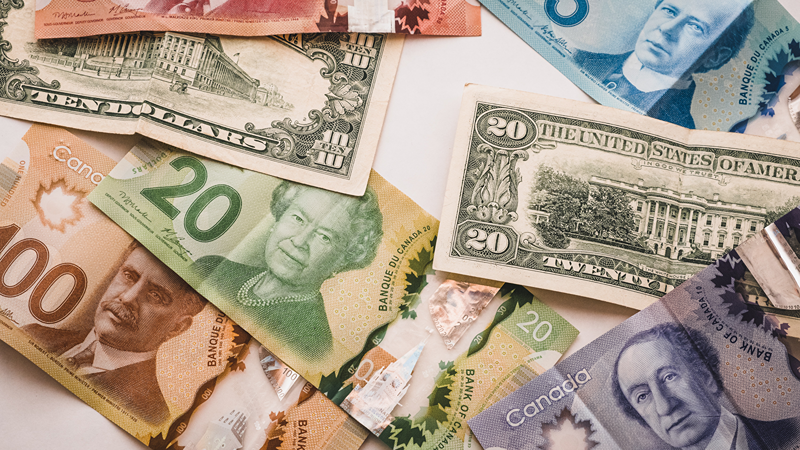Did you know you can get the Sprott Money Weekly Wrap Ups, Ask The Expert,
special promotions and insightful blog posts sent right to your inbox?
Sign up to the Sprott Money Newsletter here.
On Monday, Fed Governor Kashkari emphasized his delight in seeing the equity markets fall, all in sympathy with the Fed's attempt to "work within their mandate of 2% inflation". You hear this a lot lately from all the Fed Goons. "The Fed's mandate for stable prices" and "getting inflation back to a long-term average of 2%". OK, fine. Have at it. But there's a MAJOR part of this discussion that is conveniently avoided: the cost increases of everyday items that are not going backward.
Again, all the Goons are discussing is getting the year-over-year rate of change back to 2%. No one is talking about deflation and getting prices back to where they were before the most recent $5T in QE. To that end, see this chart:

And that's just protein. Other foodstuffs, energy, and all basic necessities of life have seen prices surge by as much as 50% over the past two years.
The fallacy of "getting inflation under control" is the idea that prices will only rise more gradually from here.
So what happens when the major recession/depression that the Fed and other central bankers are about to cause leads to job losses and wage cuts? The Fed will declare victory over "inflation" and their sycophant media will continue to worship them as demigods, but the average, everyday person will feel the economic despair like never before.
And what if the Fed is unable to "get inflation under control"? Oh sure, they'll dial up their fed funds rate and fiddle with their balance sheet. But how does that make an impact on the still-soaring energy prices due to geopolitical conflicts? Have you noticed that crude oil is still at $95/barrel? Did you see U.S. natural gas prices recently tap $10 for the first time since 2008? And don't even get me started on energy prices in Europe, which are out of control and only getting worse as we head into winter.

But it's not just energy costs. How about food prices? The hot summer and drought in Europe have led to crop failures just as the war in Ukraine dramatically reduced grain output in the "breadbasket of Europe". And U.S. crop yields are expected to fall as well, as dry weather and lack of readily available fertilizer impact growing conditions.
Wheat and soybean prices remain high, but what about corn? It's in nearly every processed food as a sweetener and it's almost universally used as feed for livestock. Perhaps you haven't noticed, but corn prices are back to near $7.00/bushel.

The point of all this is to get you to realize that none of this is "normal". The Fed can talk and act as if they have everything under control, but they most certainly do not. While no one can be certain of what "the new normal" is, one thing IS certain: We're not going back to what was considered "normal" a few years ago.

Don’t miss a golden opportunity.
Now that you’ve gained a deeper understanding about gold, it’s time to browse our selection of gold bars, coins, or exclusive Sprott Gold wafers.
About Sprott Money
Specializing in the sale of bullion, bullion storage and precious metals registered investments, there’s a reason Sprott Money is called “The Most Trusted Name in Precious Metals”.
Since 2008, our customers have trusted us to provide guidance, education, and superior customer service as we help build their holdings in precious metals—no matter the size of the portfolio. Chairman, Eric Sprott, and President, Larisa Sprott, are proud to head up one of the most well-known and reputable precious metal firms in North America. Learn more about Sprott Money.
Learn More
You Might Also Like:


















Looks like there are no comments yet.